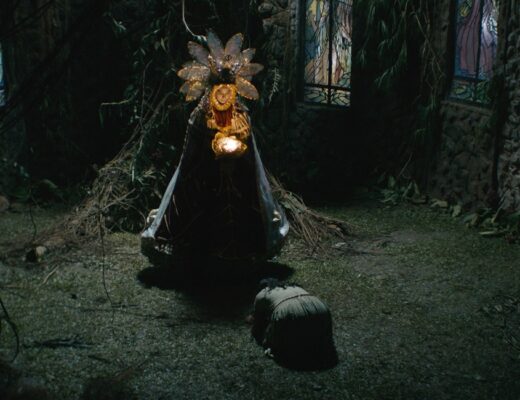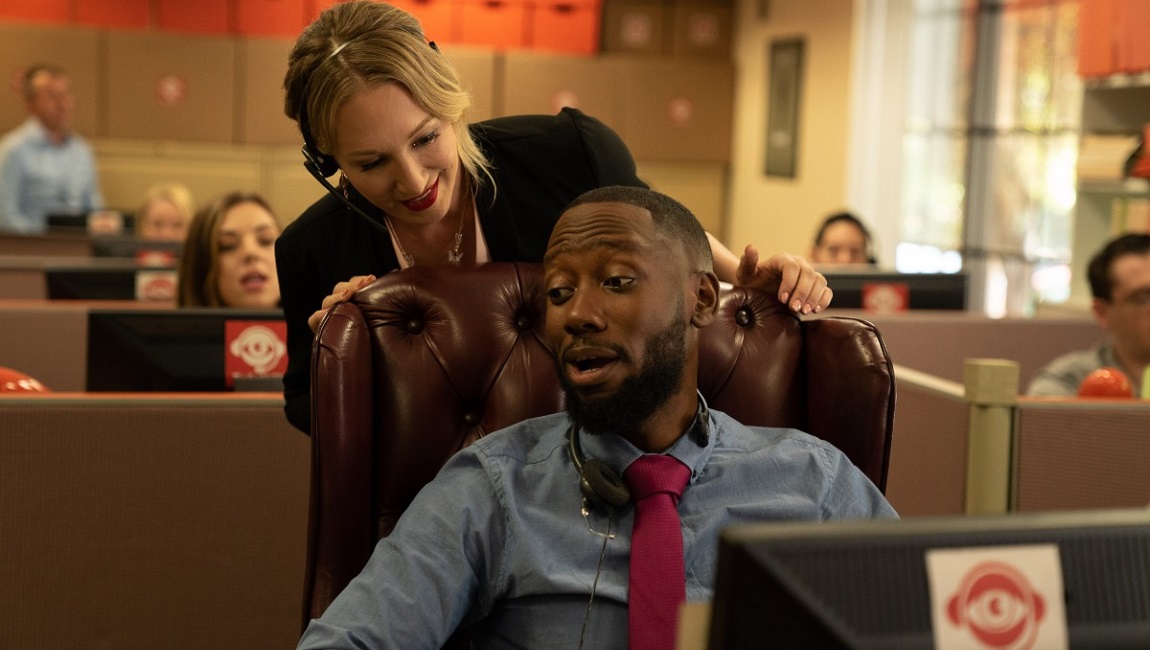When I was in third grade, I discovered my love for writing while penning an essay about Amelia Earhart. I vividly remember sitting at my kitchen table, reading about her adventures in an encyclopedia, and mythologizing both her existence as a 1930s aviatrix and her legendary disappearance. She was my first real hero. Though my fascination with Earhart has waned over the years, I’ve still done my best to keep tabs on her culturally and seek out relevant films, books, and even television shows whenever the occasion arises. This has led me into some very strange and wonderful territories. On the film front, one of my favorite Earhart-esque tales is 1933’s Christopher Strong, which stars a very young Katharine Hepburn and Colin Clive. Directed by Dorothy Arzner, the film features Hepburn (in her famous moth suit) as Lady Cynthia Darrington, a famous aviatrix who dies marvelously in a slow, nosedive crash. In the 1990s, the legend of Amelia Earhart was taken to new destinations when the series Star Trek: Voyager incorporated her story into an episode titled “The 37s.” This particular episode theorized that Earhart (played by Sharon Lawrence), and her navigator Fred Noonan (David Graf), were abducted by aliens and cryogenically frozen with hundreds of other people. And who could forget the 1994 TV movie starring Diane Keaton as Earhart and Rutger Hauer as Noonan? I know I can’t. Though it might seem odd in the era of so many Queen Elizabeth I and Coco Chanel biopics being released at once, Amelia Earhart film representation is rare. And when such movies are made, Earhart is usually a supporting character (a la Night at the Museum 2), or simply presented as a piece of history; something to make the scenery feel a bit more authentic (for instance, Child Star: The Shirley Temple Story and The Wright Stuff). In fact, in the seventy-two years since Earhart disappeared, Mira Nair’s current take on the aviatrix is the first feature-length film ever to be solely dedicated to Amelia Earhart’s story. She certainly deserves better.
Amelia, which is based on the books East to the Dawn by Susan Butler and The Sound of Wings by Mary S. Lovell, focuses on Earhart’s (Hilary Swank) years of flying fame and romantic pursuits with George Putnam (Richard Gere) and Gene Vidal (Ewan McGregor). Nair’s biopic possesses most of the right elements to make it successful — a talented leading lady, fantastic art direction and costume design, and an inherent passion within the subject — but none of it really clicks together or feels strong enough to stand alone. It’s not certain how much of this has to do with Richard Gere’s wooden acting or the lackluster direction Nair brings to the table, but Amelia just feels like it’s going through the prestige, Oscar-seeking-biopic motions and barely makes an attempt to honor or even explore the importance of Earhart as a cultural icon. In Manohla Dargis’ recent smackdown of the film, she criticized Nair for utilizing popular women’s picture techniques like sweeping music to evoke emotion. In fairness, it’s true that Nair lazily uses music to do much of the heavy lifting, but if the director’s admirable intention was indeed to create a true-blue women’s picture, the score could have fit the Amelia’s mood had the film focused on epic emotions instead of focusing on being an epic. By trying to eliminate the irony we have embedded into our culture, especially in our romances, Nair’s attempt at a sincere period piece falls pancake flat because cynicism and jagged edges have more of an effect on audiences today. While the ’30s certainly weren’t short on cynicism, the leading actresses of the period were able to use the roughness of their personalities to overcome the sometimes one-dimensional nature of their roles and leading men. Though I love ’em to death, the most popular male stars of women’s pictures, like George Brent and Ralph Bellamy, knew they couldn’t hold an emotional candle to the likes of Bette Davis and Rosalind Russell, and they were content to ride shotgun.
Perhaps the biggest flaw of Amelia, however, is its unnatural and unnecessary focus on the romance between the titular character and George Putnam. Not only does the movie come to a screeching halt whenever Swank and Gere are on screen together with their sometimes droll, mostly dull chemistry, but it also detracts from the film’s primary strength: its aerial sequences. Throughout Amelia, it’s easy to let your brain wander to Howard Hughes’ colossal film project Hell’s Angels, the two films sharing a similar construction of thrilling flying scenes inserted into a boring narrative. Though they’re not nearly as spectacular as the sequences in Christopher Strong or the Hughes’ film, Amelia’s finest moments nonetheless occur in the air, when Swank’s Earhart is free to indulge her grandest passion — base on how the film is weighted, Nair would seem to bafflingly suggest that Earhart cared more about her relationships with men than she did her relationship with the sky. Perhaps one day a film will be made about Earhart that truly understands the fallacy of that notion, as well as her utmost importance to history, but Mira Nair’s Amelia simply isn’t the right film for that job.







